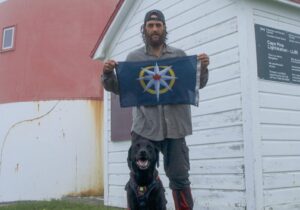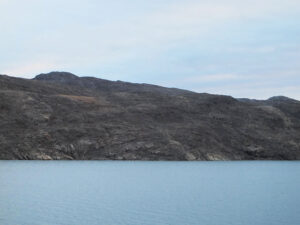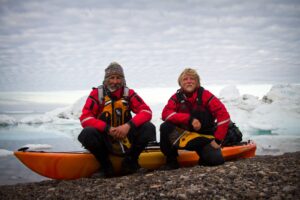It’s been a grim week in adventure. Bodies litter the Pobeda Peak area and we’ve gained new insight into the deaths on winter K2. Elsewhere, a bereaved British man’s search ended when he found the remains of his longtime partner in the Pyrenees.
Now, a helicopter crash on a guided trip in Siberia adds to the body count.
On Thursday, an MI-8 helicopter carrying 16 people sank in Kamchatka’s Kurilskoye Lake after a failed emergency landing. Despite immediate rescue efforts, the pilot and seven others died at the scene.
Local guide company Vityaz Aero operated the routine excursion to the scenic volcanic lake. According to the Russian news agency, TASS, authorities have already initiated legal procedures against the company. Only recently, its emergency training for pilots were found “insufficient”.

Tourists board a flightseeing helicopter in Yelizova. Photo: Dmitrii Kiselev/Facebook
Background: Kurilskoye Lake and Vityaz Aero
Kurilskoye Lake is the Southern Kamchatka Wilderness Area’s largest volcanic lake. Its resident salmon population, robust brown bear contingent, and scenic beauty make it a popular tourist destination. Charlie Russell chose the site to perform his well-known work with brown bears.

Brown bears fish in Kurilskoye Lake. Photo: Shutterstock.
From May to October, the local guide company, Vityaz Aero, operates helo-tours into the roadless Kamchatka interior. Starting from its heliport at Yelizovo, near Petropavlovsk-Kamchatsky, the day-long itinerary shuttles guests between three stops: the dormant Ksudach caldera, the Khodutka Hot Springs, and finally to a ranger outpost on the shores of Kurilskoye Lake.

The Ksudach Caldera. Photo: Shutterstock
The round trip covers about 400km. The company allots much of the tour’s time to the outpost stop, where guests can get out and walk with brown bears under the protection of armed guides.
Crash Details: What We Know
In heavy fog on Thursday, the guide helicopter approached its stop at the Kurilskoye ranger outpost. Then, something went wrong, and it crashed into the lake, near an island called the Heart of Alaid.

A Russian MI-2 helicopter on the shore of Kurilskoye Lake. The small island in the background is The Heart of Alaid, near where the crash took place. Photo: Dmitrii Kiselev/Facebook
The impact ripped the cargo doors open, and the ship started sinking. Incidentally, the open doors may have been the only reason anyone survived the crash. Eight people, including two crew members, five tourists, and a guide, swam out at a depth of about eight meters.
Within minutes, rangers at the nearby outpost arrived in speedboats. Two of the survivors were badly injured. None of them would have survived long in the dangerously cold water (5˚ to 6˚C).
Efforts to rescue the others were fruitless. The lake is 316m deep, and the craft had sunk too far for recovery. However, the Russian Defense Ministry deployed submersibles to investigate the wreckage this morning.

Ilyinsky volcano and Kurilskoye Lake, Southern Kamchatka Wildlife Sanctuary. Photo: Shutterstock
Aftermath: possibilities, investigations, and leads
The root cause of the crash should still be treated as conjectural. Some reports blame an equipment malfunction. Alternatively, a police source cited by TASS says the fog could have tricked the pilot into thinking the water was actually land.
Regardless of the cause, Vityaz Aero is under investigation for its lax emergency training. Some are also calling the worthiness of its aircraft into question, citing that it’s not uncommon for aging, poorly maintained Russian planes and helicopters to crash.
It’s also not the first incident of its kind for the embattled guide service. On April 19, 2017, another of its MI-8s crash-landed on the Mutnovsky volcano, injuring three people.






